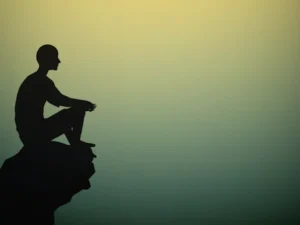In 2002, an extraordinary film was released: Ayurveda: The Art of Being. The film is a visually lush documentary that travels 10,000 miles through India, Greece, and the US to accompany practitioners of the world’s oldest continually practised holistic healthcare system. The documentary fascinated me, and since then, I have been to India a few times to be treated by Ayurvedic practitioners in Kerala and Rishikesh.
Ayurveda is one of the oldest holistic medical systems in the world. It is indigenous to India and has been practised for over 5,000 years. The term in Sanskrit means “science of life.” It combines medical and spiritual approaches to promote health and balance between mind, body, and soul. This ancient system has been called “the mother of all healing systems.”

The aim of Ayurveda is to be in a state of perfect balance and harmony, allowing the body to work at its best. It is a spirit-based science of enhancing life through a supreme knowledge of the self.
It stems from the ancient Vedic culture. It was taught for thousands of years in an oral tradition from accomplished masters to their disciples. Some of this knowledge was set to print a few thousand years ago, but much of it is inaccessible. The principles of many of the natural healing systems now familiar in the West have their roots in Ayurveda, including Homeopathy and Polarity Therapy.
The Ayurvedic system of healing teaches that five elements known as Earth, Water, Fire, Air and Space (ether) are found manifested in the human body as three bio-energy principles, known as the three humours or Tri-doshas, called Vata, Pitta and Kapha. The five elements can be seen to exist in the material universe at all organic and inorganic scales, from peas to planets. When they enter the biology of a living organism, man, for example, they acquire a biological form. The five elements are coded into three biological forces, Tri-doshas, which govern all life processes. The three Doshas are condensed forms of the five elements: Vata is the element of air and space, Pitta is fire and water, and Kapha is water and earth. Tri-doshas regulate every physiological and psychological process in the living organism. The interplay among them determines the qualities and conditions of the individual. A harmonious state of three doshas creates balance and health; an imbalance, an excess or a deficiency manifests as a sign or symptom of disease.
Everyone has three doshas in their constitutional makeup but in unique combinations. In a nutshell, we are born with a basic psycho-physiologically balanced constitution called Prakriti that remains the same throughout our lives. Prakriti literally means nature. In this context, nature means the creative force within us seeking its balance. However, many of us have a doshic or humoral imbalance, referred to as Vikriti in Ayurveda. In other words, we fall out of balance with our individual essential nature and disease results. Then Ayurveda returns to the exact nature for cure and uses lifestyle, diet, herbs, aroma therapy, colour therapy, cleansing techniques, yoga, and meditation to balance the three doshas according to our individual constitution. Briefly, Ayurveda is a science that teaches us how to live in an authentic natural balance. This is not limited to the proper functioning of our mind, body, senses, and soul but extends further in establishing a natural and balanced relationship with nature. This includes a balanced relationship between us and all the creatures, work, home, environment, society, ideas, customs and love. Hope is nature’s way of enabling us to survive so that we can discover nature itself.
Ayurveda uses a wide range of therapies, including diet and nutrition (based on the three body types), herbology, bodywork and massage, mind-body medicine, and treatments using gems. These therapies work to improve health by restoring balance, enhancing energy, promoting mental and emotional equanimity, and fostering greater patient self-awareness.



Ayurveda places great emphasis on prevention and encourages health maintenance through close attention to balance in one’s life, correct thinking, diet, lifestyle, and herbs. Knowledge of Ayurveda enables one to understand how to create this balance of body, mind, and consciousness according to one’s own constitution and make lifestyle changes to bring about and maintain this balance. Just as everyone has a unique fingerprint, each person has a particular pattern of energy—an individual combination of physical, mental, and emotional characteristics—which comprises their own constitution. Several factors determine this constitution at conception, and it remains the same throughout one’s life. Many internal and external factors act upon us to disturb this balance. They are reflected as a change in one’s constitution from the balanced state. Examples of these emotional and physical stresses include one’s emotional state, diet and food choices, seasons and weather, physical trauma, and work and family relationships. Once these factors are understood, one can take appropriate actions to nullify or minimize their effects, eliminate the causes of imbalance, and re-establish one’s original constitution. Balance is the natural order; imbalance is disorder. Health is order; disease is disorder. Within the body, there is a constant interaction between order and disorder. One can re-establish order when one understands the nature and structure of disorder.
The primary difference between Ayurveda and Western allopathic medicine is essential to understand. Western allopathic medicine currently tends to focus on symptomatology and disease. It primarily uses drugs and surgery to rid the body of pathogens or diseased tissue. Many lives have been saved by this approach. In fact, surgery is encompassed by Ayurveda. However, drugs, because of their toxicity, often weaken the body. Ayurveda does not focus on disease. Instead, Ayurveda maintains that all life must be supported by energy in balance. When minimal stress and energy flow within a person is balanced, the body’s natural defence systems will be robust and more easily defend against disease. It must be emphasized that Ayurveda is not a substitute for Western allopathic medicine. Many instances exist when the disease process and acute conditions can best be treated with drugs or surgery. Ayurveda can be used with Western medicine to make a person more robust and less likely to be afflicted with disease and/or to rebuild the body after being treated with drugs or surgery. We all have times when we don’t feel well and recognize that we’re out of balance. Sometimes, we go to the doctor only to be told nothing is wrong. What is occurring is that this imbalance has yet to become recognizable as a disease. Yet, it is severe enough to make us notice our discomfort. We may wonder whether it is just our imagination. We may also consider alternative measures and actively seek balance in our body, mind, and consciousness.
Though many Ayurvedic clinics are worldwide, I recommend travelling to India to the cradle of the science in Kerala. I stayed at Somatheeram – the World’s First Ayurveda Village with a Resort Ambiance in the beautiful Kovalam Beach. This award-winning Ayurveda Hospital is set in a tropical garden and is in a prime beachfront location. You can benefit from traditional Ayurvedic therapy and yoga in a blissfully peaceful environment. Somatheeram is the world’s first Ayurveda hospital set in a resort ambience to provide Ayurveda treatments/programmes for persons/patients worldwide. It is located at Chowara Beach, with over 15 acres of greenery on a hillock 9 km south of the famous Kovalam Beach, Trivandrum, Kerala, India. The special Ayurveda treatments and packages offered include Rejuvenation therapy, Panchakarma / Detoxification / Body purification, Slimming, Stress management, Anti-Aging, Beauty care, and various Clinical treatments for cure.
Ayurveda is the soul and essence of Somatheeram, which has traditionally provided Ayurvedic treatment for over 30 years and has rightfully earned the name ‘The Ayurveda People’. My stay was blissful, and I felt wholly invigorated and in harmony. What more can one ask?











